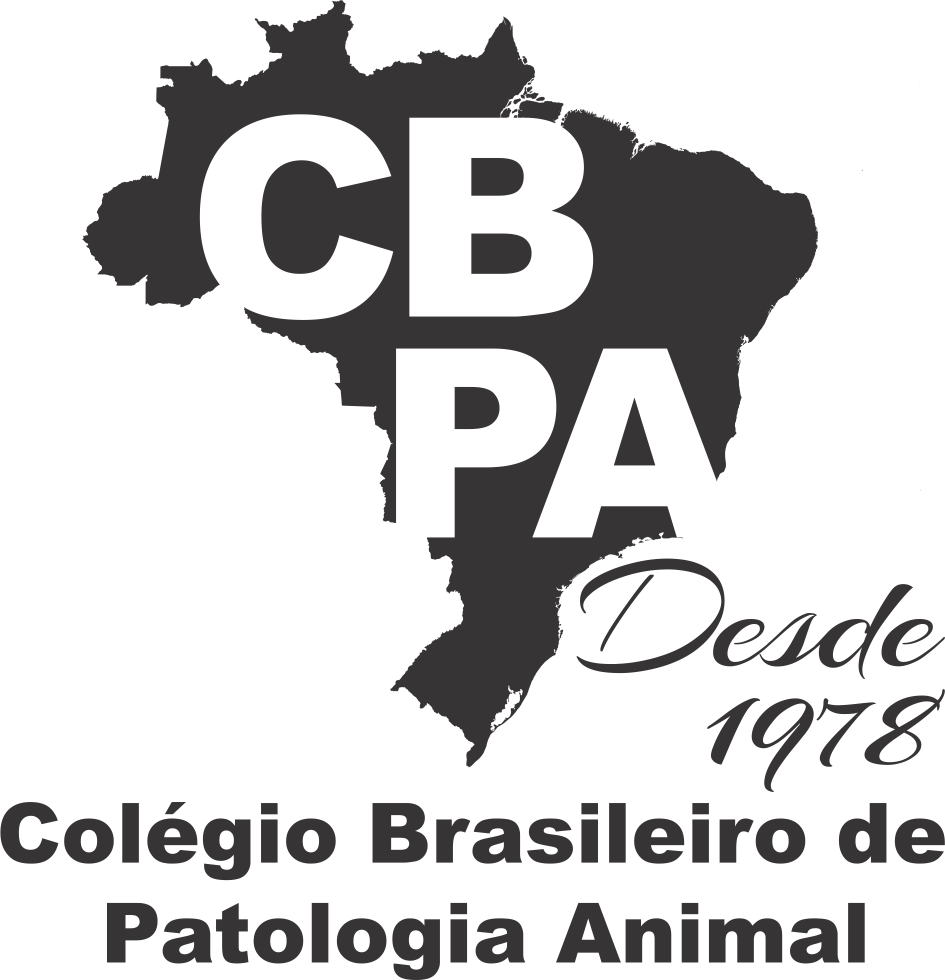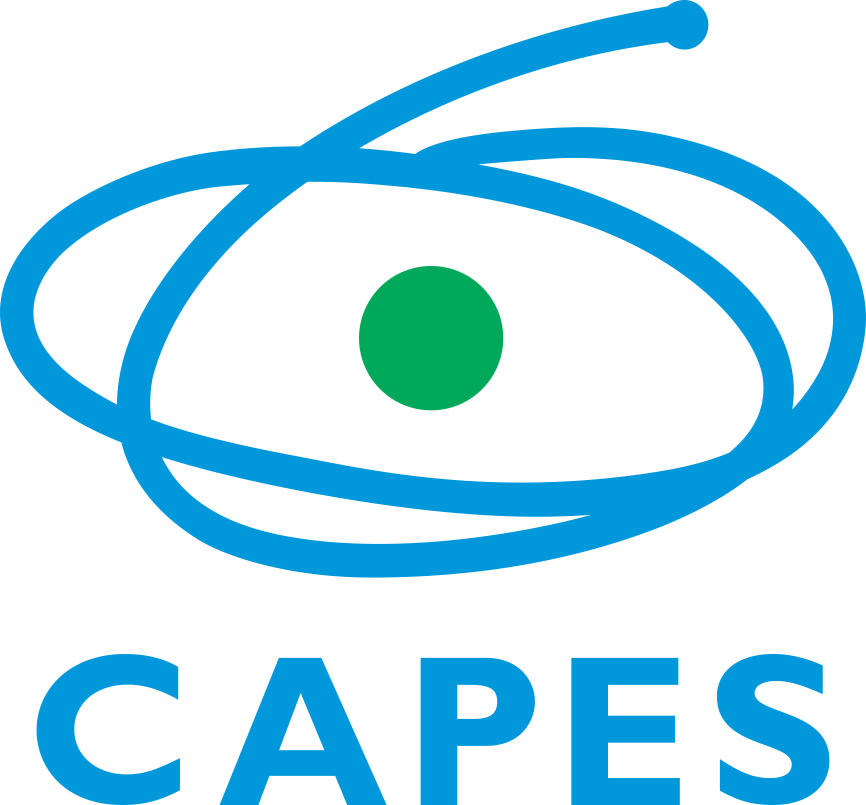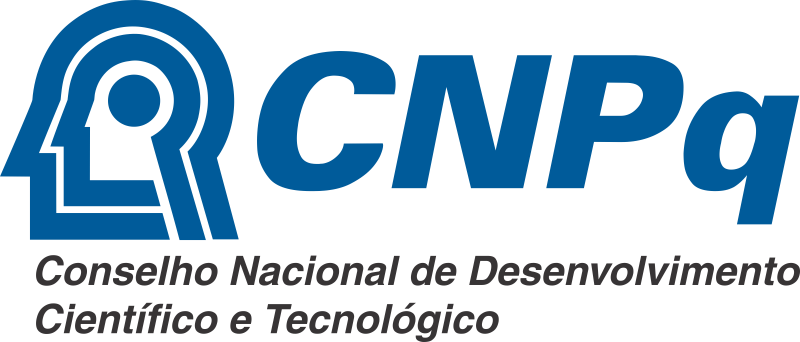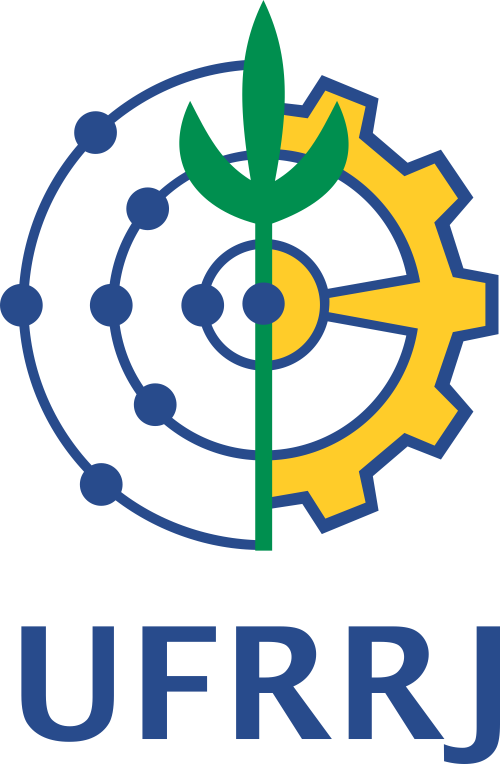Resultado da pesquisa (7)
Termo utilizado na pesquisa Coccidia
#1 - Report of coccidiosis in a free-living green-winged saltator Saltator similis in Itatiaia National Park in southeastern Brazil
Abstract in English:
The green-winged saltator Saltator similis (d’Orbigny & Lafresnaye, 1837) is a passerine bird highly valued by bird breeders and a target of illegal wildlife trafficking. Coccidian chromists are etiological agents of coccidiosis, which may be asymptomatic and enzootic in bird populations when environmental conditions are favorable. However, epizootic outbreaks with severe disease can occur due to environmental changes. In this context, this study reports a case of coccidiosis in a free-living juvenile specimen of S. similis captured at the Itatiaia National Park in southeastern Brazil. Typical clinical signs of coccidiosis were observed, and it was associated with greenish mucoid diarrhea containing a high density of coccidian oocysts. Three Isospora spp. were specifically identified in 14 fecal samples (fecal droplets) collected over two hours. Isospora saltatori (Berto, Balthazar, Flausino & Lopes, 2008) had the highest density and positivity throughout most of the collection period. Finally, this paper discusses the importance of the continuous evaluation of the health of birds as bioindicators and their coccidian ecological biomarkers as one of the strategies for evaluating the conservation status of Itatiaia National Park.
Abstract in Portuguese:
O trinca-ferro Saltator similis (d’Orbigny & Lafresnaye, 1837) é um pássaro muito valorizado por criadores de aves e pelo tráfico ilegal de animais silvestres. Os cromistas coccídios são agentes etiológicos da coccidiose, a qual pode ser assintomática e enzoótica em populações de aves quando as condições ambientais são favoráveis, mas surtos epizoóticos com doença grave podem ocorrer como resultado de mudanças ambientais. Nesse contexto, este artigo relata um caso de coccidiose em um espécime juvenil de vida livre de S. similis capturado no Parque Nacional de Itatiaia, no sudeste do Brasil. Foram observados sinais clínicos típicos de coccidiose, associados a diarreia mucóide esverdeada contendo alta densidade de oocistos. Três Isospora spp. foram especificamente identificadas em 14 defecações coletadas durante um período de duas horas. Isospora saltatori (Berto, Balthazar, Flausino & Lopes, 2008) foi a espécie com maior densidade e positividade durante a maior parte do período de coleta. Por fim, este artigo discute a importância da avaliação contínua da saúde das aves como bioindicadores, e de seus biomarcadores ecológicos coccídios, como uma das estratégias para avaliação do estado de conservação do Parque Nacional de Itatiaia.
#2 - Extraintestinal isosporoid coccidian causing atoxoplasmosis in captive green-winged saltators: clinical and hematological features, 37(11):1327-1330
Abstract in English:
ABSTRACT.- Campos S.D.E., Machado C.S.C., Souza T.V.T., Cevarolli R.C. & Almosny N.R.P. 2017. Extraintestinal isosporoid coccidian causing atoxoplasmosis in captive green-winged saltators: clinical and hematological features. Pesquisa Veterinária Brasileira 37(11):1327-1330. Departamento de Patologia e Clínica Veterinária, Universidade Federal Fluminense, Rua Vital Brazil Filho 64, Santa Rosa, Niterói, RJ 24230-340, Brazil. E-mail: s.destri@gmail.com
Populations of green-winged saltators, Saltator similis, are decreasing especially because of illegal trade and infectious diseases. We describe natural cases of an extraintestinal isosporoid coccidian in caged S. similis, and suggest the need of preventive measures in handling these birds. Nonspecific clinical signs were seen in all of them, however, intracytoplasmic Atoxoplasma sp. was found in peripheral blood, reinforcing the idea of systemic isosporosis. Leukocytosis with high number of heterophils and monocytes suggested that atoxoplasmosis in green-winged saltators can progress as an acute disease. The birds showed clinical improvement after treatment. Handling recommendations were proposed to upgrade hygienic conditions of the facilities. We concluded that nonspecific symptoms and an acute inflammatory process can be associated with atoxoplasmosis in young S. similis. We emphasize the importance of blood smear to detect merozoites
Abstract in Portuguese:
RESUMO- Campos S.D.E., Machado C.S.C., Souza T.V.T., Cevarolli R.C. & Almosny N.R.P. 2017. Extraintestinal isosporoid coccidian causing atoxoplasmosis in captive green-winged saltators: clinical and hematological features. [Coccidiose extraintestinal causando atoxoplasmose em trinca-ferros de cativeiro: aspectos clínicos e hematológicos.] Pesquisa Veterinária Brasileira 37(11):1327-1330. Departamento de Patologia e Clínica Veterinária, Universidade Federal Fluminense, Rua Vital Brazil Filho 64, Santa Rosa, Niterói, RJ 24230-340, Brazil. E-mail: s.destri@gmail.com
As populações de trinca-ferro, Saltator similis, estão declinando especialmente em função do comércio illegal e das doenças infecciosas. Descrevem-se casos naturais de coccidiose extraintestinal em S. similis de cativeiro, sugerindo a necessidade de medidas preventivas no manejo desses animais. Sinais clínicos inespecíficos foram observados em todos os animais, contudo, formas intracitoplasmáticas de Atoxoplasma sp. foram vistas no sangue periférico, reforçando a ideia de isosporose sistêmica. Leucocitose com aumento de heterófilos e monócitos sugeriram que a atoxoplasmose em trinca-ferro pode progredir como uma doença aguda. As aves apresentaram melhora clínica após tratamento. Recomendações de manejo foram propostas a fim de melhorar as condições higiênicas das instalações das aves. Concluiu-se que sinais inespecíficos e processo inflamatório agudo podem ser associados com a atoxoplasmose em S. similis jovens. Enfatizamos a importância da avaliação do esfregaço sanguíneo para detector os merozoítos.
#3 - Anticoccidial effect of Artemisia annua hydroalcoholic extract in poultry beds contaminated with Eimeria sp., 35(7):649-651
Abstract in English:
ABSTRACT.- Sprenger L.K., Campestrini L.H., Yamassaki F.T., Buzatti A., Maurer J.B.B., Baggio S.F.Z., Magalhães P.M. & Molento M.B. 2015. [Anticoccidial effect of Artemisia annua hydroalcoholic extract in poultry beds contaminated with Eimeria sp.] Efeito anticoccidiano de extrato hidroalcoólico de Artemisia annua em camas de aves contaminadas com Eimeria sp. Pesquisa Veterinária Brasileira 35(7):649-651. Departamento de Medicina Veterinária, Universidade Federal do Paraná, Rua dos Funcionários 1540, Juvevê, Curitiba, PR 80035-050, Brazil. E-mail: lew.sprenger@gmail.com
The aim of this study was to determine the efficacy of hydroalcoholic extract of Artemisia annua against oocysts of Eimeria sp. in contaminated poultry beds. The extract was produced after 7 days of storage at 4°C, which was used to perform the phytochemical screening; the artemisinin measurement; the total phenolic; antioxidant testing and toxicity test. To test the anticoccidial activity, the birds space composed of shaver trees, were contaminated with 5000 oocysts. Four treatment were formed, in triplicate, were used in different concentrations as G1: 12mg/mL, G2:= 9mg/mL, G3: 6mg/mL, and C-: water. After contamination 800 mL of the herbal at different concentrations were sprayed on the bed and collected, in triplicate, 10 cm2 each site, randomly, at times: 0, 3, 6, 24, 48, and 72 hours after application. In phytochemical analysis, were shown compounds with antiparasitic properties, such as flavonoids and tannins. The herbal contained 59.409±1.47mg/dL artemisinin. The product at a concentration of 12mg.mL-1 showed efficacy from 44.25 to 40.71%. The results of biochemical tests, with the in vitro test showed that the extract has produced high potential for combating Eimeria sp.
Abstract in Portuguese:
RESUMO.- Sprenger L.K., Campestrini L.H., Yamassaki F.T., Buzatti A., Maurer J.B.B., Baggio S.F.Z., Magalhães P.M. & Molento M.B. 2015. [Anticoccidial effect of Artemisia annua hydroalcoholic extract in poultry beds contaminated with Eimeria sp.] Efeito anticoccidiano de extrato hidroalcoólico de Artemisia annua em camas de aves contaminadas com Eimeria sp. Pesquisa Veterinária Brasileira 35(7):649-651. Departamento de Medicina Veterinária, Universidade Federal do Paraná, Rua dos Funcionários 1540, Juvevê, Curitiba, PR 80035-050, Brazil. E-mail: lew.sprenger@gmail.com
O objetivo deste estudo foi avaliar a eficácia do extrato hidroalcoólico de Artemisia annua frente a oocistos de Eimeria sp. em camas contaminadas. O extrato foi produzido com 7 dias de percolação a 4°C, sendo posteriormente realizada a marcha fitoquímica; dosagem de fenóis totais, quantificação de artemisinina, ensaio antioxidante e teste de toxicidade. Para testar a atividade anticoccidiana, camas de aves compostas de cepilho de árvores foram contaminadas com 5000 oocistos. Foram formados quatro tratamentos, em triplicata, nos quais foram usadas diferentes concentrações, sendo G1: 12mg/mL, G2: 8mg/mL, G3: 4mg/mL e C-: água. Após a contaminação, foram aspergidos, 800 mL dos extratos nas diferentes concentrações sobre as camas e coletadas, em triplicatas, 10 cm2 de cada local, aleatoriamente, nos tempos: 0, 3, 6, 24, 48, e 72 horas após a aplicação. Nas análises fitoquímicas, foram evidenciados diversos compostos com propriedades antiparasitárias, como flavonoides e taninos. O fitoterápico continha 59,409±1,47µg/dL de artemisinina. O produto na concentração de 12mg.mL-1 apresentou eficácia entre 45,5 e 42,1%. Os resultados dos testes bioquímicos, juntamente com os encontrados no teste anticoccidiano, evidenciaram que o extrato produzido possui alto potencial para combater Eimeria sp.
#4 - Isosporoid Coccidia (Apicomplexa: Eimeriidae) parasites of Tanagers (Passeriformes: Thraupidae) from the Marambaia Island, Brazil, 31(9):798-805
Abstract in English:
ABSTRACT.- Berto B.P., Luz H.R., Flausino W., Teixeira-Filho W.L., Ferreira I. & Lopes C.W.G. 2011. Isosporoid Coccidia (Apicomplexa: Eimeriidae) parasites of Tanagers (Passeriformes: Thraupidae) from the Marambaia Island, Brazil. Pesquisa Veterinária Brasileira 31(9):798-805. Departamento de Parasitologia Animal, Instituto de Veterinária, Universidade Federal Rural do Rio de Janeiro, Seropédica, RJ 23890-000, Brazil. E-mail: bertobp@ufrrj.br
In recent years some coccidian parasites of birds were recorded in Marambaia Island, which is a protected environment with a great biodiversity of birds, mainly tanagers. In this current study Isospora tiesangui, I. sepetibensis, I. ramphoceli, I. navarroi, I. cadimi and I. marambaiensis were identified according to their respective thraupid hosts of the Marambaia Island. These species were characterized with histograms, linear regression and analysis of variance (ANOVA). The main feature of identification was the morphology of the sporocyst, mainly Stieda and substieda bodies, since the morphometry did not provide sufficient differentiation. Besides, Dacnis cayana and Thraupis palmarum were reported as new hosts to I. sepetibensis and I. navarroi respectively.
Abstract in Portuguese:
RESUMO.- Berto B.P., Luz H.R., Flausino W., Teixeira-Filho W.L., Ferreira I. & Lopes C.W.G. 2011. Isosporoid Coccidia (Apicomplexa: Eimeriidae) parasites of Tanagers (Passeriformes: Thraupidae) from the Marambaia Island, Brazil. [Coccídios isosporóides (Apicomplexa: Eimeriidae) parasitos de traupídeos (Passeriformes: Thraupidae) da ilha de Marambaia, Brasil.] Pesquisa Veterinária Brasileira 31(9):798-805. Departamento de Parasitologia Animal, Instituto de Veterinária, Universidade Federal Rural do Rio de Janeiro, Seropédica, RJ 23890-000, Brazil. E-mail: bertobp@ufrrj.br
Nos últimos anos, alguns coccídios de aves foram registrados na Ilha da Marambaia, que é um ambiente protegido com uma grande biodiversidade de aves, principalmente traupídeos. No presente estudo Isospora tiesangui, I. sepetibensis, I. ramphoceli, I. navarroi, I. cadimi e I. marambaiensis foram identificadas de acordo com suas respectivos hospedeiros da Ilha da Marambaia, RJ. Essas espécies foram caracterizadas com histogramas, regressão linear e análise de variância (ANOVA). A principal característica de identificação foi a morfologia do esporocisto, principalmente os corpos de stieda e substieda, uma vez que a morfometria não forneceu diferenciação suficiente. Além disso, Dacnis cayana e Thraupis palmarum foram registrados como novos hospedeiros para I. sepetibensis e I. navarroi respectivamente.
#5 - Anticoccidial activity of hydrochloric acid (HCl) against Eimeria tenella in broiler chickens, 31(5):425-429
Abstract in English:
ABSTRACT.- Abbas R.Z., Manzoor Z., Munawar S.H., Iqbal Z., Khan M.N., Saleemi M.K., Zia M.A. & Yousaf A. 2011. Anticoccidial activity of hydrochloric acid (HCl) against Eimeria tenella in broiler chickens. Pesquisa Veterinária Brasileira 31(5):425-429. Department of Parasitology, University of Agriculture, Faislabad - 38040, Pakistan. E-mail: raouaf@hotmail.com
The present study was planned to evaluate the anticoccidial activity of the different concentrations of the HCl against Eimeria tenella infection in broiler chickens in comparison with the amprolium anticoccidial. For this purpose, a total of 198 chicks were placed 11 per pen with three pens per treatment. The different concentrations of HCl (1000ppm, 2000ppm and 3000ppm) and amproilum (at the dose rate of 125ppm) were given to the experimental groups in drinking water from 10 to 19th days of age. One group was kept as infected non medicated control and one as non infected non medicated control. At the 12th day of age, all the groups were inoculated orally with 75,000 sporulated oocysts except non infected non medicated control. Anticoccidial activity was evaluated on the basis of performance (weight gain, feed conversion ratio) and pathogenic (oocyst score, lesion score and mortality %age) parameters. Among HCl medicated groups, the maximum anticoccidial effect was seen in the group medicated with 1000ppm HCl followed by 2000ppm and 3000ppm HCl medicated groups. Amprolium and 1000ppm HCl were almost equivalent in suppressing the negative performance and pathogenic effects associated with coccidiosis (Eimeria tenella) challenge. In summary, the lower doses of HCl have the potential to be used as alternative to chemotherapeutic drugs for Eimeria tenella control. It is therefore suggested that further studies should be carried out to determine the possible minimum safe levels of HCl with least toxic effects to be used as anticoccidial.
Abstract in Portuguese:
ABSTRACT.- Abbas R.Z., Manzoor Z., Munawar S.H., Iqbal Z., Khan M.N., Saleemi M.K., Zia M.A. & Yousaf A. 2011. Anticoccidial activity of hydrochloric acid (HCl) against Eimeria tenella in broiler chickens. Pesquisa Veterinária Brasileira 31(5):425-429. Department of Parasitology, University of Agriculture, Faislabad - 38040, Pakistan. E-mail: raouaf@hotmail.com
The present study was planned to evaluate the anticoccidial activity of the different concentrations of the HCl against Eimeria tenella infection in broiler chickens in comparison with the amprolium anticoccidial. For this purpose, a total of 198 chicks were placed 11 per pen with three pens per treatment. The different concentrations of HCl (1000ppm, 2000ppm and 3000ppm) and amproilum (at the dose rate of 125ppm) were given to the experimental groups in drinking water from 10 to 19th days of age. One group was kept as infected non medicated control and one as non infected non medicated control. At the 12th day of age, all the groups were inoculated orally with 75,000 sporulated oocysts except non infected non medicated control. Anticoccidial activity was evaluated on the basis of performance (weight gain, feed conversion ratio) and pathogenic (oocyst score, lesion score and mortality %age) parameters. Among HCl medicated groups, the maximum anticoccidial effect was seen in the group medicated with 1000ppm HCl followed by 2000ppm and 3000ppm HCl medicated groups. Amprolium and 1000ppm HCl were almost equivalent in suppressing the negative performance and pathogenic effects associated with coccidiosis (Eimeria tenella) challenge. In summary, the lower doses of HCl have the potential to be used as alternative to chemotherapeutic drugs for Eimeria tenella control. It is therefore suggested that further studies should be carried out to determine the possible minimum safe levels of HCl with least toxic effects to be used as anticoccidial.
#6 - Anticoccidial effects of acetic acid on performance and pathogenic parameters in broiler chickens challenged with Eimeria tenella, 31(2):99-103
Abstract in English:
ABSTRACT.- Abbas R.Z., Munawar S.H., Manzoor Z., Iqbal Z., Khan M.N., Saleemi M.K., Zia M.A. & Yousaf A. 2011. Anticoccidial effects of acetic acid on performance and pathogenic parameters in broiler chickens challenged with Eimeria tenella. Pesquisa Veterinária Brasileira 31(2):99-103. Department of Parasitology, University of Agriculture, Faislabad 38040, Pakistan. E-mail: raouaf@hotmail.com
The objective of the present study was to evaluate the anticoccidial effect of the different concentrations of the acetic acid in the broiler chickens in comparison with the amprolium anticoccidial. A total of 198 chicks were placed 11 per pen with three pens per treatment. The different concentrations (1%, 2% and 3%) of acetic acid and amproilum (at the dose rate of 125ppm) were given to the experimental groups in drinking water from 10–19th days of age. One group was kept as infected non medicated control and one as non infected non medicated control. All the groups were inoculated orally with 75,000 sporulated oocysts at the 12th day of age except non infected non medicated control. Anticoccidial effect was evaluated on the basis of performance (weight gain, feed conversion ratio) and pathogenic (oocyst score, lesion score and mortality %age) parameters. Among acetic acid medicated groups, the maximum anticoccidial effect was seen in the group medicated with 3% acetic acid followed by 2% and 1% acetic acid medicated groups. Amprolium and 3% acetic acid were almost equivalent in suppressing the negative performance and pathogenic effects associated with coccidiosis (Eimeria tenella) challenge. In summary, acetic acid has the potential to be used as alternative to chemotherapeutic drugs for Eimeria tenella control. Concentration-dependent anticoccidial effect of acetic acid suggests that further studies should be carried out to determine the possible maximum safe levels of acetic acid with least toxic effects to be used as anticoccidial.
Abstract in Portuguese:
ABSTRACT.- Abbas R.Z., Munawar S.H., Manzoor Z., Iqbal Z., Khan M.N., Saleemi M.K., Zia M.A. & Yousaf A. 2011. Anticoccidial effects of acetic acid on performance and pathogenic parameters in broiler chickens challenged with Eimeria tenella. Pesquisa Veterinária Brasileira 31(2):99-103. Department of Parasitology, University of Agriculture, Faislabad 38040, Pakistan. E-mail: raouaf@hotmail.com
The objective of the present study was to evaluate the anticoccidial effect of the different concentrations of the acetic acid in the broiler chickens in comparison with the amprolium anticoccidial. A total of 198 chicks were placed 11 per pen with three pens per treatment. The different concentrations (1%, 2% and 3%) of acetic acid and amproilum (at the dose rate of 125ppm) were given to the experimental groups in drinking water from 10–19th days of age. One group was kept as infected non medicated control and one as non infected non medicated control. All the groups were inoculated orally with 75,000 sporulated oocysts at the 12th day of age except non infected non medicated control. Anticoccidial effect was evaluated on the basis of performance (weight gain, feed conversion ratio) and pathogenic (oocyst score, lesion score and mortality %age) parameters. Among acetic acid medicated groups, the maximum anticoccidial effect was seen in the group medicated with 3% acetic acid followed by 2% and 1% acetic acid medicated groups. Amprolium and 3% acetic acid were almost equivalent in suppressing the negative performance and pathogenic effects associated with coccidiosis (Eimeria tenella) challenge. In summary, acetic acid has the potential to be used as alternative to chemotherapeutic drugs for Eimeria tenella control. Concentration-dependent anticoccidial effect of acetic acid suggests that further studies should be carried out to determine the possible maximum safe levels of acetic acid with least toxic effects to be used as anticoccidial.
#7 - Eimerid coccidia in capybaras Hydrochoerus hydrochaeris Linnaeus, 1766 (Rodentia: Hydrochaeridae) from southern Bahia, Brazil, p.323-328
Abstract in English:
ABSTRACT.- Albuquerque G.R., Berto B.P., Catenacci L., Cunha Nogueira S.S., Nogueira-Filho S.L.G. & Lopes C.W.G. 2008. Eimerid coccidia in capybaras Hydrochoerus hydrochaeris Linnaeus, 1766 (Rodentia: Hydrochaeridae) from southern Bahia, Brazil. Pesquisa Veterinária Brasileira 28(7):323-328 Departamento de Ciências Agrárias e Ambientais, Universidade Estadual de Santa Cruz, BR415 Km 16, Salobrinho, Ilhéus, BA 45662-000, Brazil. E-mail: gralbu@uesc.br
Two eimerid coccidia are reported in a capybara (Hydrochoerus hydrochaeris) population kept in captivity in the south of Bahia, northeastern Brazil (14° 47’ 57.89’’ S and 39° 10’ 10.58" W). Oocysts of Eimeria ichiloensis are subspheroidal to ellipsoidal, 26.2 x 21.7mm with bi-layered wall, the outer yellow and sculptured and the inner, dark and smooth. Residuum is absent, but usually 2-3 polar granules are present. Sporocysts are ovoid, 12.0 x 7.6mm. Stieda body and sporocyst residuum are present. Oocysts of Eimeria trinidadensis are subspheroidal to ellipsoidal, 22.2 x 19.6mm with bi-layered wall, the outer yellow and smooth, and the inner dark and smooth. Residuum is absent, but one polar granule is present. Sporocysts are ovoid, 11.0 x 6.9mm. Stieda body and sporocyst residuum are present. Based on these descriptions and previous ones it can be concluded that these coccidea species are widely dispersed in capybaras in South America.
Abstract in Portuguese:
ABSTRACT.- Albuquerque G.R., Berto B.P., Catenacci L., Cunha Nogueira S.S., Nogueira-Filho S.L.G. & Lopes C.W.G. 2008. Eimerid coccidia in capybaras Hydrochoerus hydrochaeris Linnaeus, 1766 (Rodentia: Hydrochaeridae) from southern Bahia, Brazil. Pesquisa Veterinária Brasileira 28(7):323-328 Departamento de Ciências Agrárias e Ambientais, Universidade Estadual de Santa Cruz, BR415 Km 16, Salobrinho, Ilhéus, BA 45662-000, Brazil. E-mail: gralbu@uesc.br
Two eimerid coccidia are reported in a capybara (Hydrochoerus hydrochaeris) population kept in captivity in the south of Bahia, northeastern Brazil (14° 47’ 57.89’’ S and 39° 10’ 10.58" W). Oocysts of Eimeria ichiloensis are subspheroidal to ellipsoidal, 26.2 x 21.7mm with bi-layered wall, the outer yellow and sculptured and the inner, dark and smooth. Residuum is absent, but usually 2-3 polar granules are present. Sporocysts are ovoid, 12.0 x 7.6mm. Stieda body and sporocyst residuum are present. Oocysts of Eimeria trinidadensis are subspheroidal to ellipsoidal, 22.2 x 19.6mm with bi-layered wall, the outer yellow and smooth, and the inner dark and smooth. Residuum is absent, but one polar granule is present. Sporocysts are ovoid, 11.0 x 6.9mm. Stieda body and sporocyst residuum are present. Based on these descriptions and previous ones it can be concluded that these coccidea species are widely dispersed in capybaras in South America.








